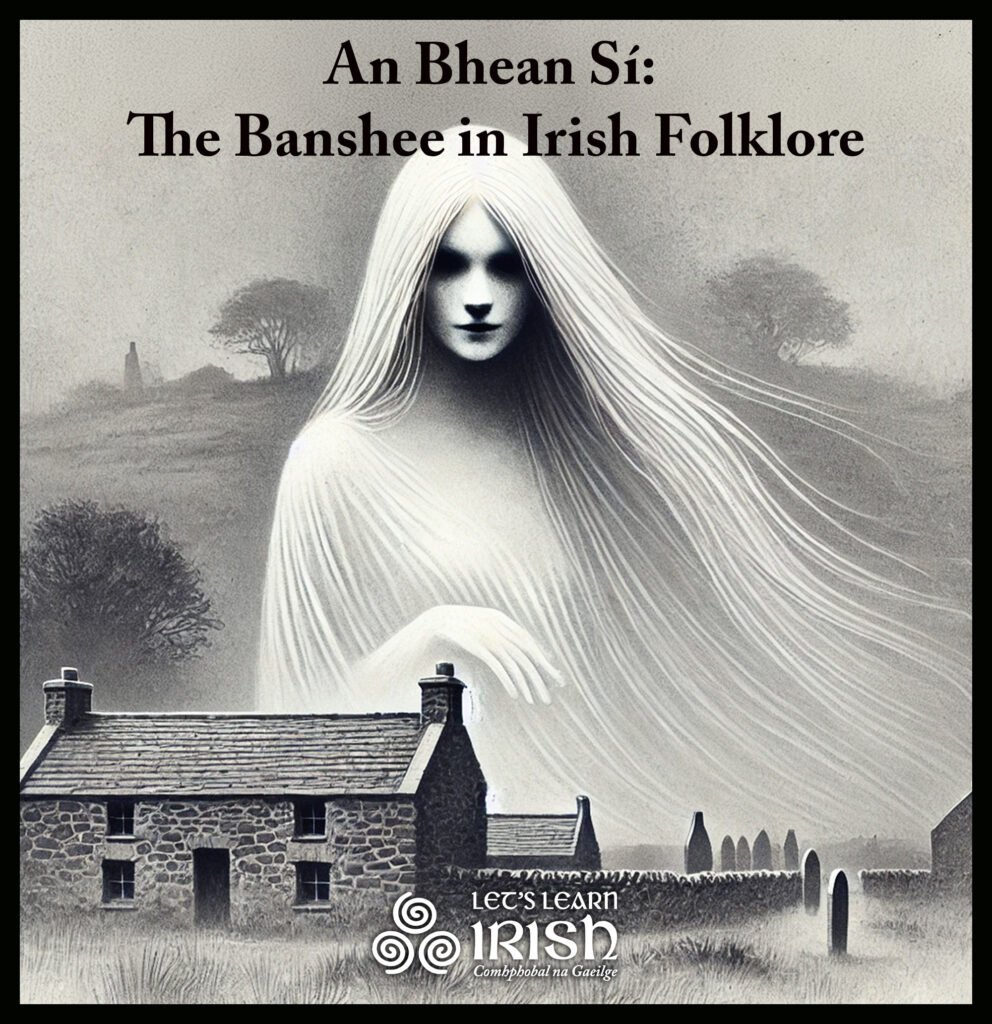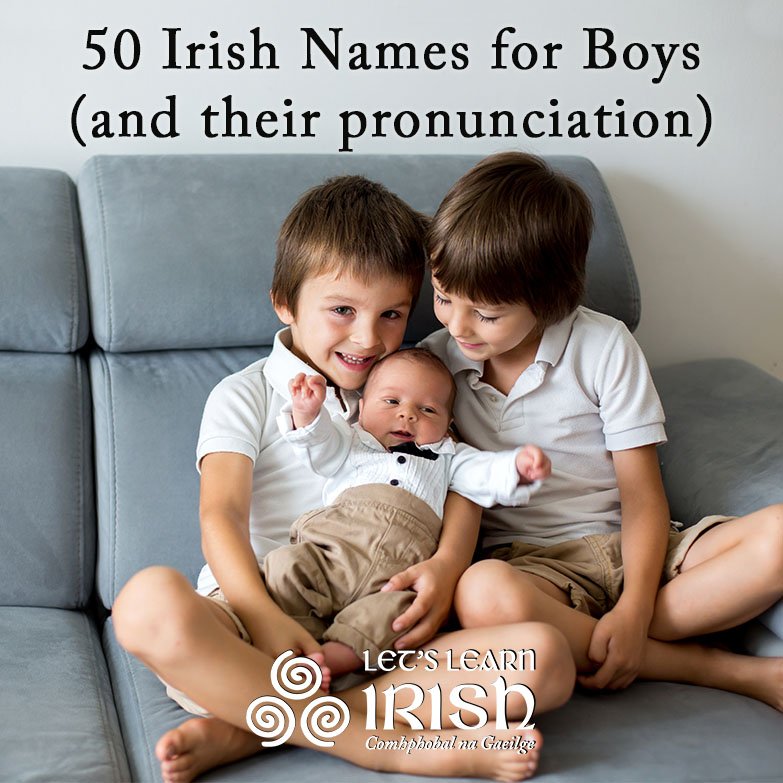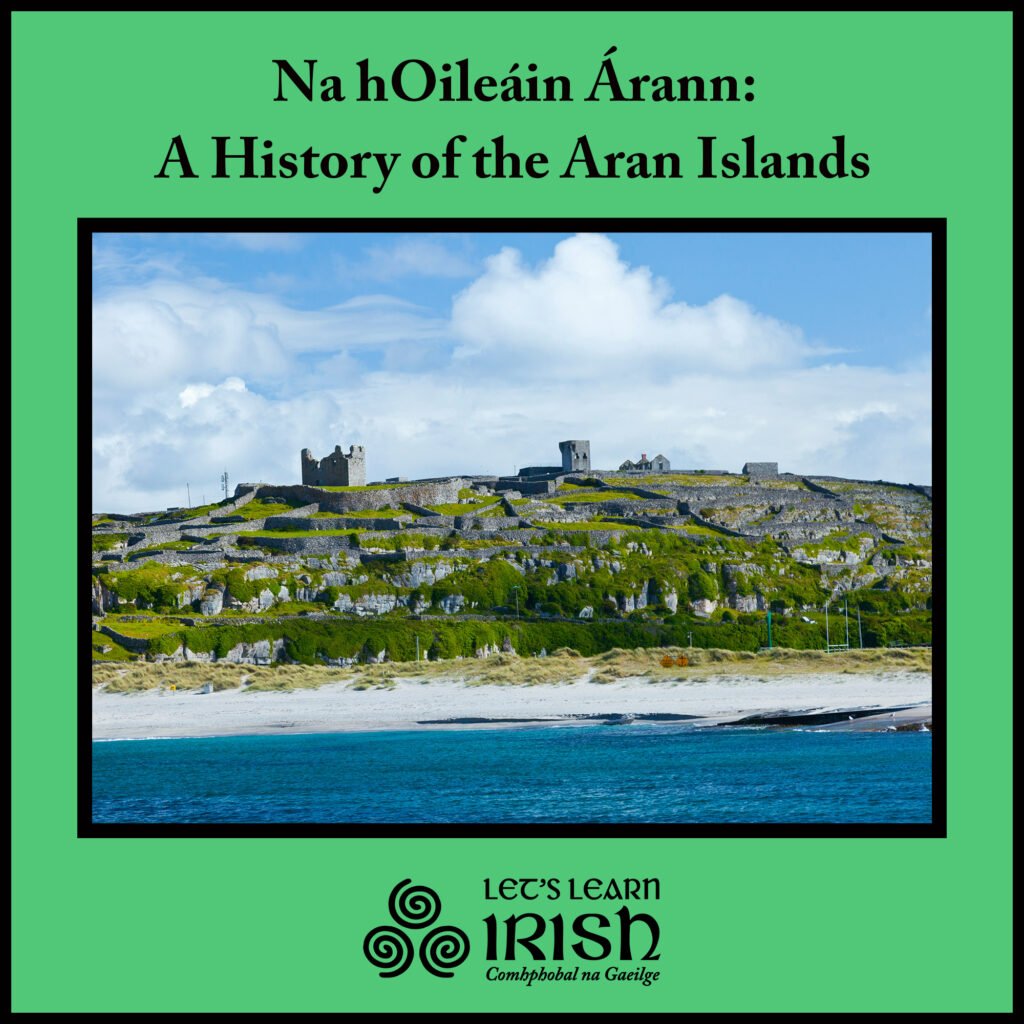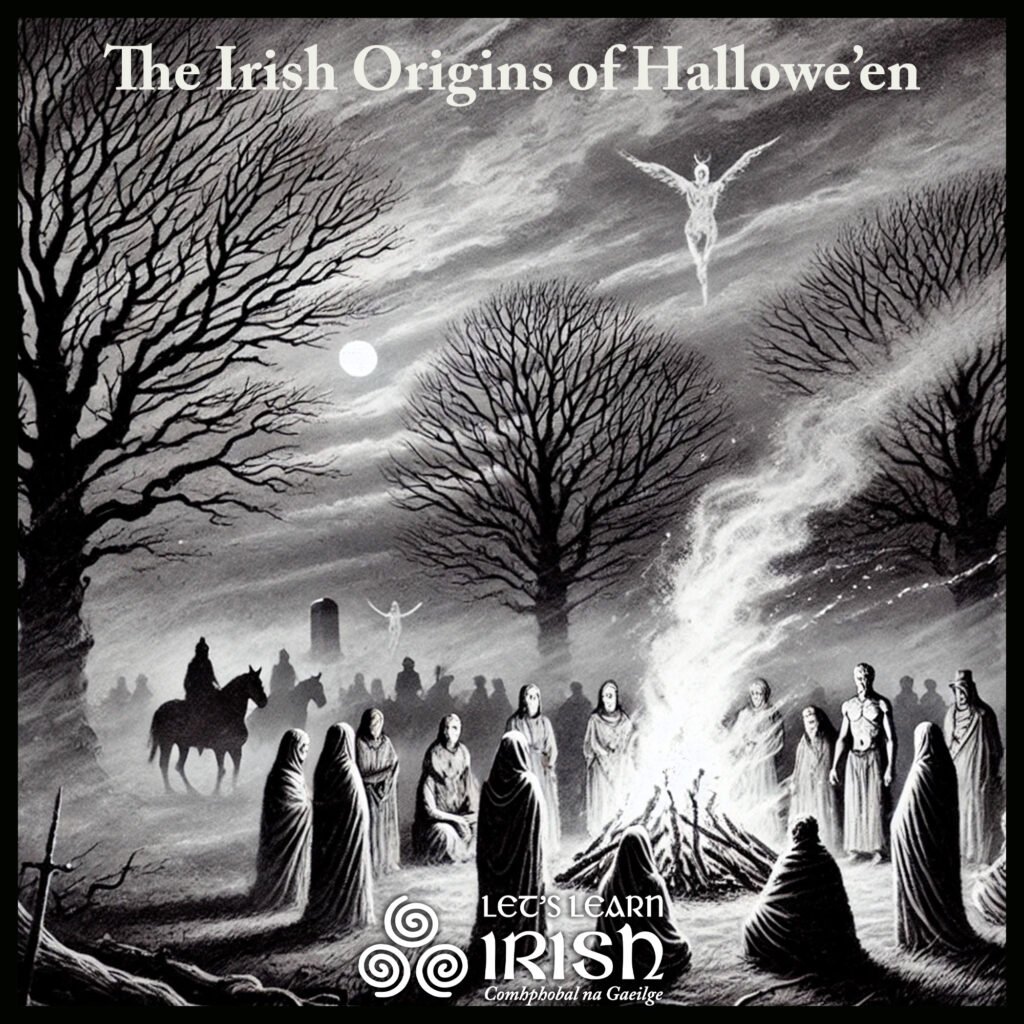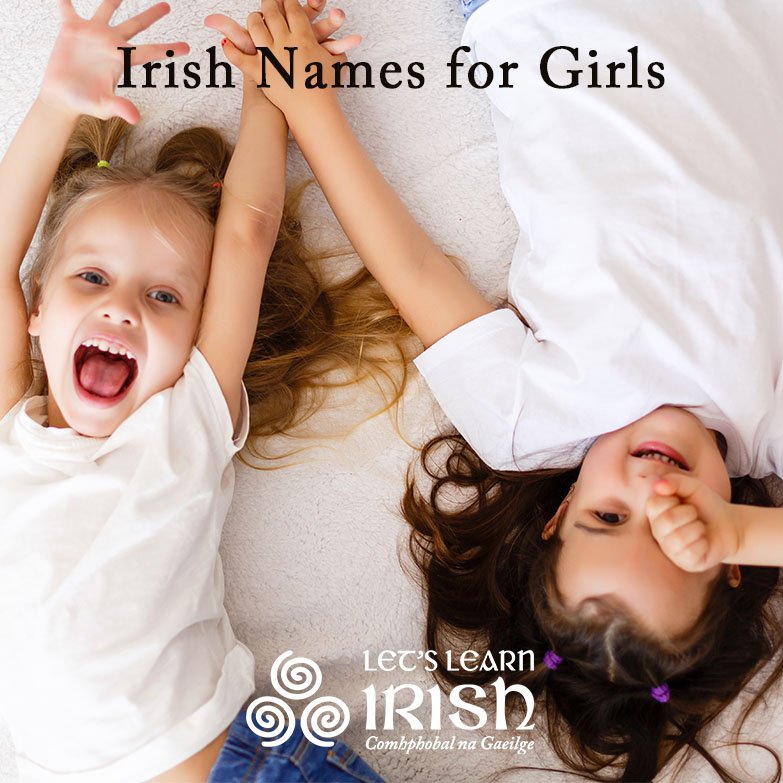Three Scary Figures from Irish Folklore
Ireland has long been a place where the imagination has flourished, through mythology, literature and a celebrated tradition of oral storytelling. It may not be surprising, then, that supernatural tales and their abundant characters have long thrived in Irish folklore. In addition to being the birthplace of original Hallowe’en traditions, there have also been many dark, otherworldly figures that the Irish have had to contend with in its past.
While the typical Hallowe’en images of witches, skeletons and zombies may seem fairly mundane to us now, those in Ancient Ireland believed themselves to be vexed by certain malicious characters they sought not to cross. No doubt you have heard about the banshee, but this article will give a brief overview of three scary figures from Irish folklore that are less known—the headless and terrifying Dúlachán, the mischievous Púca and the deformed, vampiric Abhartach— as well as the legends they may have inspired. These malevolent figures offer an insight into both the fears and creativity of those living in an older Ireland.
An Dúlachán (The Dark Man)
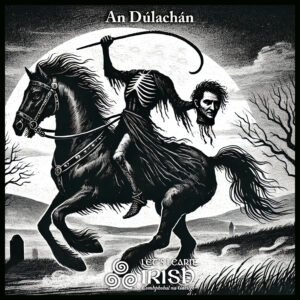 Much like an bhean sí (banshee), the Dúlachán, or Dullahan in English, is a harbinger of death. And for those who know the story “The Legend of Sleepy Hollow,” he will seem a little familiar.
Much like an bhean sí (banshee), the Dúlachán, or Dullahan in English, is a harbinger of death. And for those who know the story “The Legend of Sleepy Hollow,” he will seem a little familiar.
The Dúlachán rides a black horse through the night, carrying his head in his hand and a whip made from a human spine. The eyes in his head search the landscape at night for those who are about to die. Anyone who watches the Dúlachán pass will either get splashed with blood or their eye taken out with the whip. Once the Dúlachán stops riding he calls out a name, and that person immediately dies. The only way to ward him off is to wear gold metal, of which he has an irrational fear.
In some accounts, instead of mounted on a horse the Dúlachán drives the Death Coach, or cóiste bodhar (meaning “silent coach”). Often the cóiste bodhar is seen driving out of a graveyard. Once it begins to roam the earth, it cannot leave without attaining a mortal soul. Much of what we know about the Dúlachán and the cóiste bodhar is from the Irish antiquarian Thomas Crofton Croker, who authored the book Fairy Legends and Traditions of the South of Ireland (written between 1825 and 1828). He describes the head of the Dúlachán to resemble moldy cheese and the cóiste bodhar as being made out of the bones of humans.
Some people theorize that Washington Irving’s short story “The Legend of Sleepy Hollow” was inspired by the Dúlachán. While the Dúlachán certainly predates the headless horseman in “Sleepy Hollow” (published in 1820), there are other similar figures that appear across Europe in the last millennium, making the exact origin of the folklore difficult to trace. Still, it is possible that the haunting figure Irving brought to an American audience had Irish roots.
Abhartach
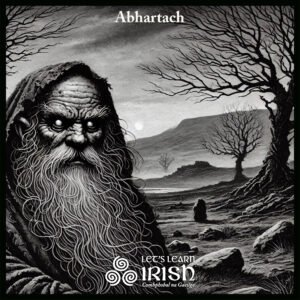 Dracula, too, just might have Irish origins.
Dracula, too, just might have Irish origins.
While it was originally presumed that Bram Stoker found inspioráid (inspiration) for his title character in a 15th century Romanian ruler who liked to impale his victims, recent research argues that the Dublin author was more likely imitating the folklore of Abhartach.
According to legend, Abhartach was a cruel, dwarfish ruler in modern day County Derry, who was thought to be a magician. After slipping to his death while trying to catch his wife in the act of cheating, he was buried upright, as was the custom for people of high rank. However, the next day he awoke and left the grave, demanding that his servants cut their wrists to feed him fuil (blood).
Abhartach’s servants convinced another chieftain, Cathán, to slay their vile ruler, but after he did, Abhartach returned from the grave once again. With Abhartach clearly being a member of na neamh-mairbh (the walking dead), Cathán consulted the druids, who told him that Abhartach’s power would be taken away if he was killed with a stake made from a yew tree and buried upside down. Abhartach’s grave is thought to be in the townland of Slaughtaverty, Derry, where it is known locally the “The Giant’s Grave.” Once he was buried upside down and under a large stone, Abhartach never returned.
An Púca
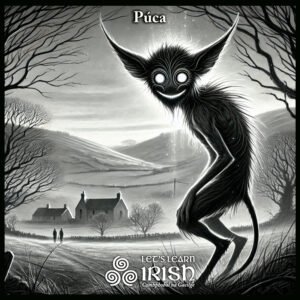 Much more innocent than the Dúlachán and Abhartach (and admittedly less scary), an púca is also an Irish supernatural being closely linked to Hallowe’en. The púca tends to inhabit the most remote places in Ireland—and indeed other parts of the world, as it exists in many other cultures too. Being the Irish word for spirit or ghost, the first recorded evidence of the púca dates back to the 8th century.
Much more innocent than the Dúlachán and Abhartach (and admittedly less scary), an púca is also an Irish supernatural being closely linked to Hallowe’en. The púca tends to inhabit the most remote places in Ireland—and indeed other parts of the world, as it exists in many other cultures too. Being the Irish word for spirit or ghost, the first recorded evidence of the púca dates back to the 8th century.
The púca is a shapeshifter with a penchant for mischievousness. It often takes the form of a common mammal, such as a goat, cat, dog, rabbit or, alternatively, a human that retains some animal features. However, it most often appears as a black horse, trying to trick people to take a ride on its back. Once it has an unwitting person on it, it takes him or her for a wild ride before eventually leaving them back where they started. Luckily, the person is generally unharmed. In addition to not typically being violent, some púcaí (the plural of an púca) are even benevolent, helping humans with crops or preventing them from suffering accidents.
The púca is associated with Samhain, the Celtic pagan festival that would eventually become Hallowe’en. Samhain, celebrated on the evening of October 31st, marked the end of the harvest season, and any remaining crops in the field were thought to be an offering to the púcaí (also called “the púca’s share”). November 1st being particularly dedicated to the púcaí, it is thought they have tended to behave well on that day.
The Supernatural and the Irish Language
It has been said that the Irish language is a periscope into the Irish psyche. Knowing the Irish language offers insight into everything from placenames to the reasons folkloric beings are called what they are, giving a fuller picture of what they describe than the English version can offer. Perhaps even more interesting, the Irish language, as author Manchán Magan suggests, often emphasizes a connection to the supernatural. For example, the word scim means a thin coating of particles, such as a layer of dust. However, it can also mean “a fairy film that covers the land, or a magical vision, or, best and most alluring of all, succumbing to the supernatural world through sleep.”
Learning about the Irish’s connection to otherworldly spirits provides a useful context for picking up new words in Irish, particularly in the Hallowe’en season. In fact, if you’re interested in learning new phrases to help you talk about an Dúlachán, Abhartach, an púca and other Irish supernatural characters, check out this list of Halloween vocabulary. We hope that in time you can build on these phrases, and perhaps tell a story or two of your own, next time you join us for an Irish class or comhrá session!
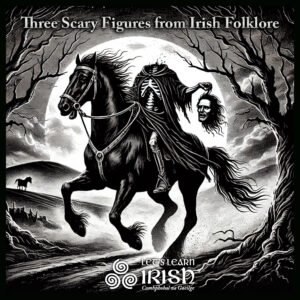 Sometimes it’s impressive how certain creatures in folklore persist throughout a culture, and perhaps even more impressive how many of them have Irish origins. There was a time, especially in Ireland’s long past, in which the natural and supernatural worlds were inherently connected. Figures like the Dúlachán, Abhartach and the púca pay tribute to an era in which the Irish people had to negotiate the world of the preternatural, as well as remind us of the rich folklore cultivated on the island throughout the ages.
Sometimes it’s impressive how certain creatures in folklore persist throughout a culture, and perhaps even more impressive how many of them have Irish origins. There was a time, especially in Ireland’s long past, in which the natural and supernatural worlds were inherently connected. Figures like the Dúlachán, Abhartach and the púca pay tribute to an era in which the Irish people had to negotiate the world of the preternatural, as well as remind us of the rich folklore cultivated on the island throughout the ages.
Bígí páirteach!
Join the online Irish community at LetsLearnIrish.com.
Follow on social media @LetsLearnIrish.

